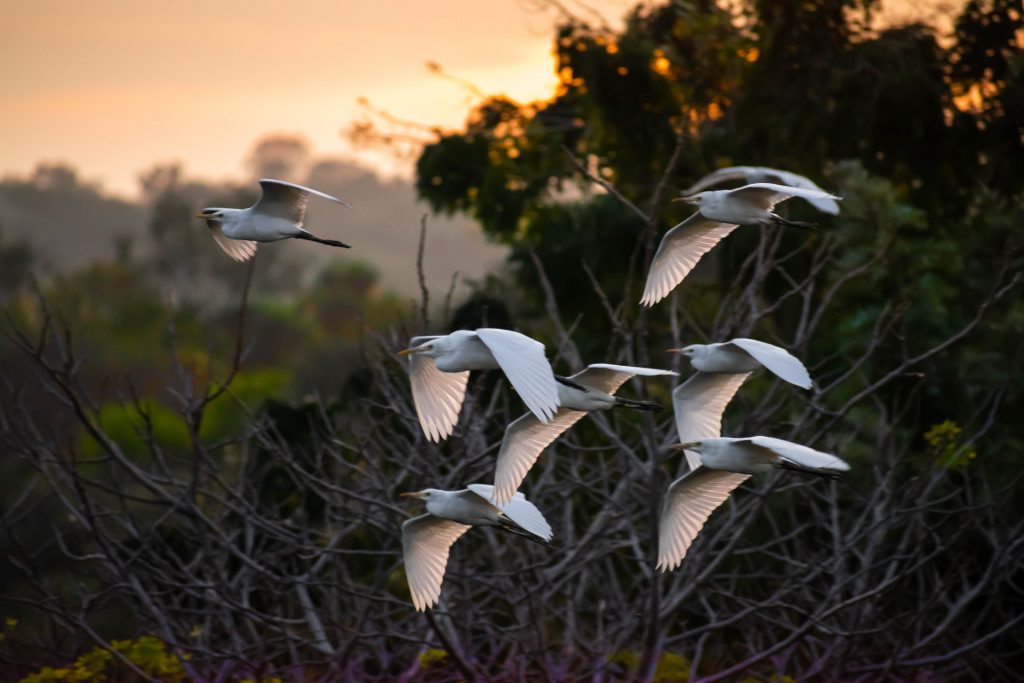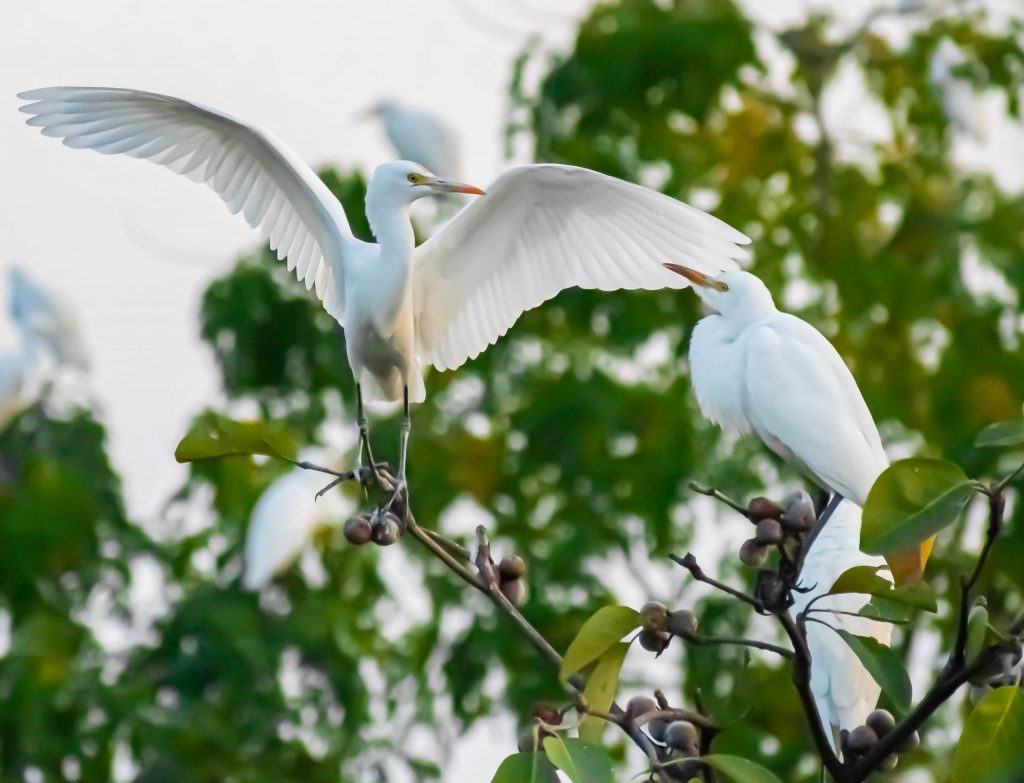Every winter evenings, come sunset, the NLSIU campus resonates with bird sounds and the sky is filled with a swirl of black and white as hundreds of birds fly around in circles before settling on the treetops. Usually, the flock is a mix of white egrets, house crows and ravens, with the occasional parrot joining this fleet.

These beautiful white birds with yellow beaks and long feathers are a visual delight, and are usually seen on the NLS campus during the winter months. So, what are Egrets?
Egrets (Bubulcus ibis) derive their name from the word “aigrette” meaning brush, referring to the long filamentous feathers that have for long been used as plumes for hats. However, not all egrets have feathers cascading down its back. Some tend to develop these feathers only during the breeding season.
According to ornithologists, Egrets belong to the same family as night herons which were seen in large numbers in Bangalore some years ago.
City-based ecologist and ornithologist Dr. M B Krishna identifies these birds on the NLS campus as ‘Cattle Egrets.’ These egrets have a habit of following cattle while grazing and grab the insects or worms that are disturbed from the soil by the cattle while grazing. Hence the name. While they may not be highly dependent on water bodies, they are often found in large open areas including meadows and lakes.
Like clockwork, these birds turn up around 5.30 every evening at the NLS campus. The timing indicates that these birds are coming to the campus to roost, observed Dr. Krishna.
The fact that they usually come visiting during the winter months may be attributed to local movement of these birds. “The birds move based on the optimum availability of food and may choose locations where they feel secure or those that seem like familiar territory during a certain time of the year. Some birds also move to specific areas for breeding purposes,” says Krishna.

A common pattern seen every day is of the birds arriving in droves, and circling around as they fly high and close together. What starts out as a small number of white egrets soon escalates to a large flock that grows in size every minute. On and on they circle for several minutes until finally deciding to settle on the tallest trees with loud squawks.
Egrets are in fact known for making dry, croaking sounds, nasal squeals, and other harsh calls. According to the Cornell Lab of Ornithology, some egret species are said to be particularly vocal during the breeding season as they go about establishing their territories, courting, forming pairs, and maintaining pair bonds.
As for the circling pattern that is followed routinely by these birds, Dr Krishna says it serves two functions: (1) To watch out for any kind of possible threat or danger before they settle, and (2) to collect the flock – it’s a signal for the other birds to join the flock.
The arrival of the egrets usually means the flight of the smaller house crows from these treetops. This is usually because of the size of the bird. “Egrets are generally not aggressive but the fact that they are larger birds may be a reason for these house crows to take flight. Egrets attain their adult size very quickly and remain the same for the rest of their life span. In fact, most egrets would have attained their full size by the time they leave their nests,” says Dr Krishna.
If you are as fascinated with these birds as we are, here’s a short video of the white egrets arriving at the NLSIU campus in the evenings.
* Photos & editing by Visel Creations.

